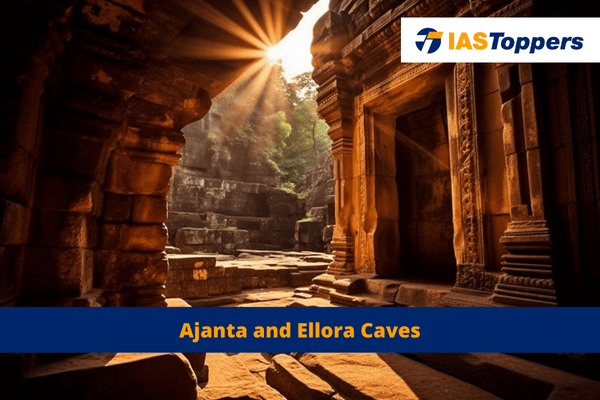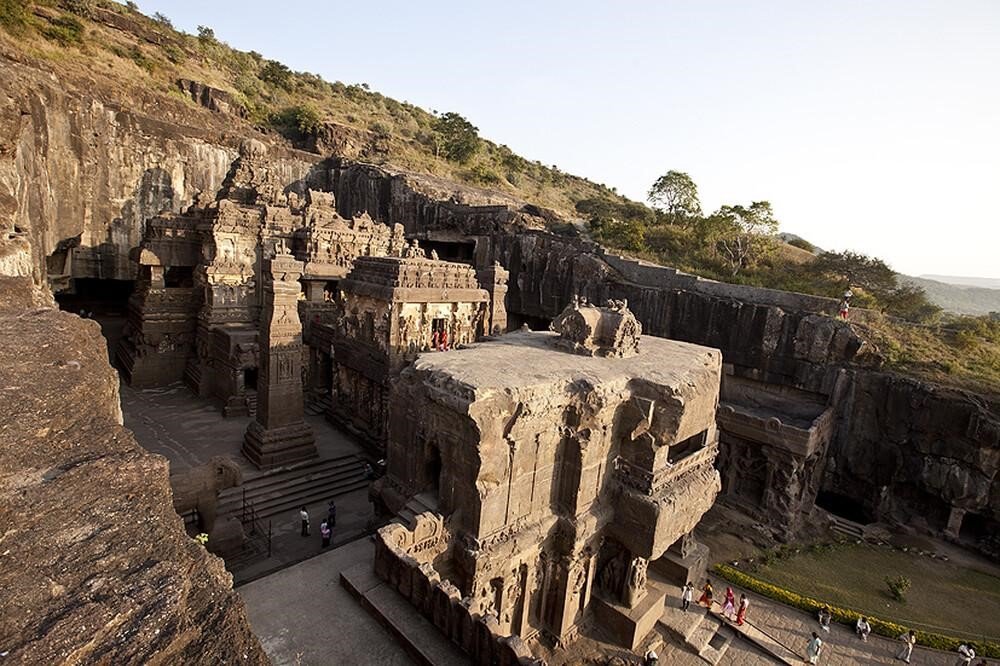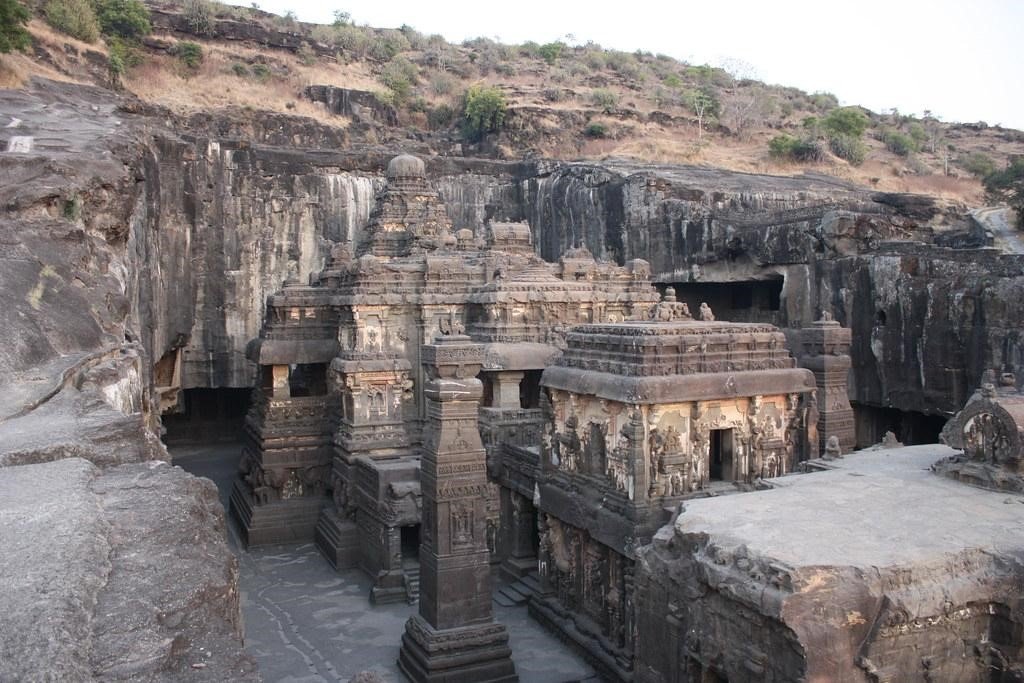The Ellora Caves located in Maharashtra, India, mesmerizes visitors with their 34 magnificent rock-cut temples, showcasing the harmonious coexistence of Hindu, Buddhist, and Jain art forms. These ancient caves, patronized by various dynasties, bear witness to a rich cultural tapestry and stand as a UNESCO World Heritage Site.
Ellora Caves will be helpful for UPSC IAS Exam preparation. GS Paper-1 Art and Culture.
Table of Content
- Ellora Caves
- Ellora Cave Paintings
- Kailasa Temple (Cave 16)
- Conclusion
- Frequently Asked Questions
Ellora Caves
- The Ellora Caves are a series of 34 magnificent rock-cut temples located in northwest-central Maharashtra state, western India.
- The Ellora caves consist of total 34 caves out of which 17 are Hindu, 12 are Buddhist, and 5 are Jain.
- The Ellora Caves were constructed after the Ajanta Caves. The chronology of constructions is as follows:
- Hindu Phase from 550 AD to 600 AD,
- Buddhist Phase from 600 AD to 730 AD, and
- Hindu and Jain Phase from 730 AD to 950 AD.
- Ellora served as a group of monasteries (viharas) and temples (chaityas); some of the caves include sleeping cells that were carved for monks.
- The Ellora monuments were patronized by the Rashtrakutas, Kalachuris, Chalukyas, and Yadavas.
- The Rashtrakuta and Kalachuri dynasties constructed parts of the Hindu and Buddhist caves, while the Yadava dynasty constructed a number of the Jain caves.
- The Ellora Caves are a UNESCO World Heritage Site.
Ellora Cave Paintings
- The mural paintings at Ellora are found in five caves, mostly limited to Cave on the No. 16, i.e., Kailasha Temple.
- The paintings were done in two phases:
- First-phase paintings were done during the carving of the caves, while second-phase ones were done several centuries later.
- The earlier paintings show Vishnu with his consort Lakshmi borne through the clouds by Garuda, the celestial bird.
- The later paintings, made in Gujarati style, depict a procession of Shaiva holy men.
- The paintings are related to all three religions: Buddhism, Jainism, and Hinduism.
- Ellora Cave paintings are newer as compared to Ajanta Cave paintings.
Important paintings of Ellora:
- Goddess Lakshmi and Lord Vishnu
- Lord Shiva with his followers.
- Beautiful and gracious Apsaras.
Kailasa Temple (Cave 16)
- The Kailasa Temple is the largest monolithic rock structure in the world and is located at the Ellora Caves.
- The temple is carved out of a single rock cliff face and is 300 feet long, 175 feet wide, and over 100 feet high.
- The temple is dedicated to Lord Shiva.
- The temple complex was built from top to bottom, unlike many other ancient rock structures.
- The Kailasa Temple is built buy Rashtrakuta Empire in the 8th century CE.
Conclusion
Kailasa Temple, a remarkable feat of monolithic architecture, reigns as the centrepiece of the Ellora Caves. Carved entirely from a single rock cliff face, this grand temple dedicated to Lord Shiva captivates with its colossal size and intricate craftsmanship. The cave paintings found within Ellora, spanning multiple religions and showcasing divine beings like Goddess Lakshmi, Lord Vishnu, and Lord Shiva, add an ethereal touch to the historical and spiritual significance of these sacred caves.
Ref: Source-1
| Other Articles in History & Culture | |
| Pala Art and Architecture | Hoysala Empire |
| Hindustani Music | Kuchipudi |
| Medicine in Ancient India | Mahayana Buddhism |
FAQs (Frequently Asked Questions)
Who built Ellora caves?
Ellora caves were built during the Rashtrakuta dynasty.
When were Ellora caves built?
The Ellora Caves were built in 3 Phases: Hindu Phase (550 AD to 600 AD), Buddhist Phase (600 AD to 730 AD), and Hindu and Jain Phase (730 AD to 950 AD).
Where is Ellora Caves situated?
Ellora Caves are situated in the northwest-central Maharashtra state, western India.
How many caves are there in Ellora?
Total 34 caves (17 Hindu, 12 Buddhist, and 5 Jain) are there in Ellora.




